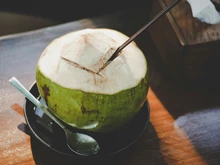
A recent study by the ICAR-Central Marine Fisheries Research Institute (CMFRI) sheds light on the effectiveness of the ban in ensuring the long-term sustainability of Kiddi prawn populations. The Kiddi prawn (Parapenaeopsis stylifera) fishery along India’s southwest coast has long been a vital component of the region's economy, catering to both domestic and international markets. However, concerns arose regarding the impact of the monsoon trawl ban on the viability of this valuable resource.
Effectiveness of the Monsoon Trawl Ban
The implementation of the monsoon trawl ban initially raised apprehensions among fishermen regarding the potential loss of unharvested prawns as they migrate to deeper waters. However, the CMFRI study reveals that despite this migration, the prawns remain accessible to fishing methods at depths of 50 to 100 meters immediately following the ban period.
The study elucidates that the near-shore population of Karikadi prawns during the monsoon season primarily comprises juveniles. By restricting fishing during this critical period, the ban facilitates the continued recruitment of prawns, fostering growth in both size and numbers. Consequently, the monsoon trawl ban emerges as a beneficial measure for sustaining Kiddi prawn populations.
Strategic Trawling Recommendations:
To optimize harvesting post-ban, the study recommends focusing trawling activities at depths of 50 to 100 meters between August and September. This targeted approach ensures the collection of prawns that migrate to deeper waters during the monsoon, thereby maximizing resource utilization while adhering to conservation objectives.
Resettlement Patterns and Environmental Correlations:
An intriguing finding of the study is the resettlement of unharvested large-sized Karikadi prawns along the Indian coast, driven by favorable salinity conditions. This observation underscores the resilience of the species and its ability to adapt to varying environmental parameters. Utilizing GIS-based spatial distribution tracking, the study correlates prawn movement and maturity with environmental factors, providing valuable insights into their distribution dynamics.
Instead of being detrimental, the ban emerges as an effective strategy for ensuring the long-term viability of this valuable commodity. By addressing socio-economic concerns raised by stakeholders and providing scientific evidence of unique distribution patterns, the study paves the way for informed fisheries management practices that balance conservation and economic sustainability.










